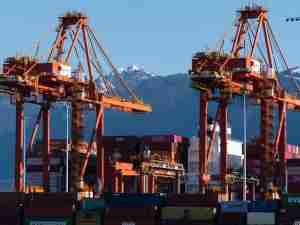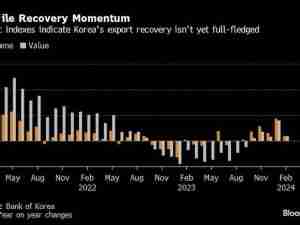Japan’s trade deficit ballooned to a record in August that highlights the increasing pain of the weak yen as import costs spiral upwards, adding to pressure on the country’s economic recovery.
The unadjusted trade deficit expanded to 2.82 trillion yen ($19.7 billion) last month, the finance ministry reported Thursday. The gap was far larger than economist estimates and extends the sequence of red ink to 13 months, the longest stretch since 2015.
Imports rose 49.9% in value from a year ago, reaching a record, and led by crude oil, coal, and liquid natural gas. Exports increased around half that rate, helped by a continued recovery in car shipments. Compared to the month before, moves were a lot more subdued, as exports fell 0.7% while imports gained 1.5%.
The record trade gap adds to concerns over the strength of Japan’s economic recovery, as higher import bills for energy and food can cool consumption. A weaker yen fuels the deficit by making inbound shipments more expensive, and paying for those goods in yen also reinforces downward pressure on the Japanese currency.
The impact of rising import costs on consumers is closely watched by officials, as Japan’s economy recovered its pre-pandemic size earlier this year largely thanks to a rebound in domestic consumer spending.
“The weak yen’s impact is different for companies and households,” said Taro Saito, head of economic research at NLI Research Institute. “It helps companies with exports and boost their overseas sales in dollars, while households see their real incomes fall.”
What Bloomberg Economics Says...
“Looking ahead, we expect the trade deficit to expand again in September. The yen’s plunge will likely inflate the import bill, while weaker global demand limits export growth.
-- Yuki Masujima, economist
So far Prime Minister Fumio Kishida has tapped fiscal spending measures to help households and businesses deal with inflation. But as wage gains continue to trail inflation, the rising cost of imports could continue to eat into households’ spending power.
The trade report showed the average exchange rate was 135.08 yen against the dollar, 22.9% weaker than a year ago. The yen has continued to slide this year against the dollar as the US Federal Reserve raises interest rates aggressively to contain rampant inflation while the Bank of Japan keeps them at rock-bottom levels.
That differing stance was hammered home Wednesday when the yen sharply weakened on the US’s stronger-than-expected inflation figures. The move prompted a rare rate check from the BOJ that reinforced warning hints of possible intervention from Finance Minister Shunichi Suzuki.
Meanwhile, exports appear to be slowing down compared to a month ago, suggesting growth is already beginning to slow in Japan’s key markets including the US and Europe. Central banks around the world are continuing their fight against inflation, raising rates even at the expense of economic growth.
Aside from the currency’s impact, global inflation in commodity prices has been boosting the value of trade this year. Imports and exports gained 22.1% and 49.9% respectively in value while they hardly shifted in volume, meaning actual trade activity is largely unchanged.
“Recently exports are not picking up much in volume even as the yen falls,” said NLI’s Saito. “Slowdowns in overseas economies can make the trend worse, and I think that’s a bigger risk to the economy than fluctuations in the currency.”








